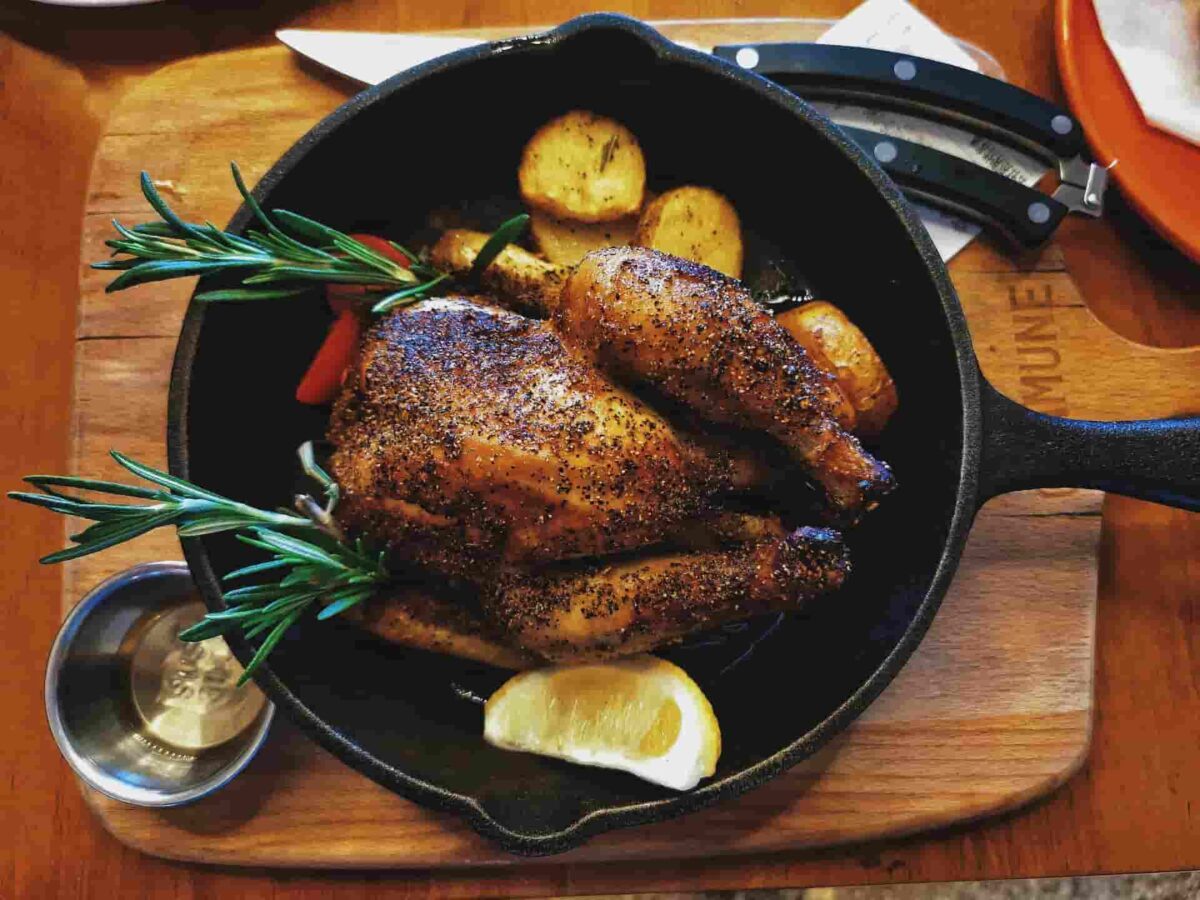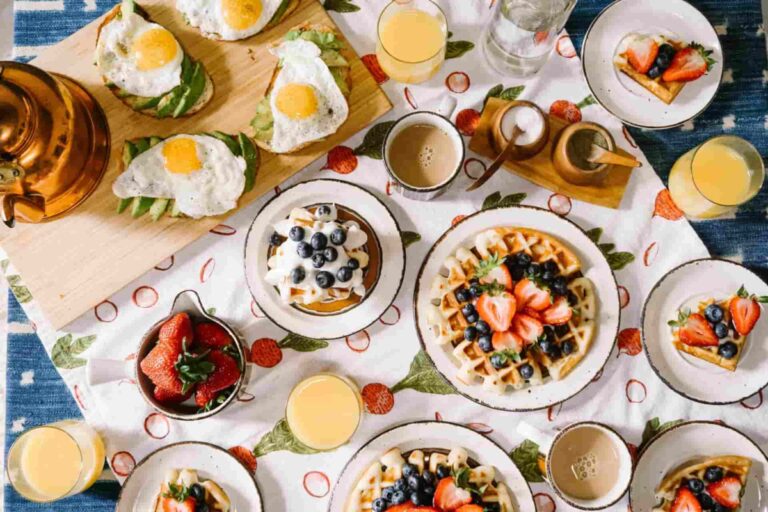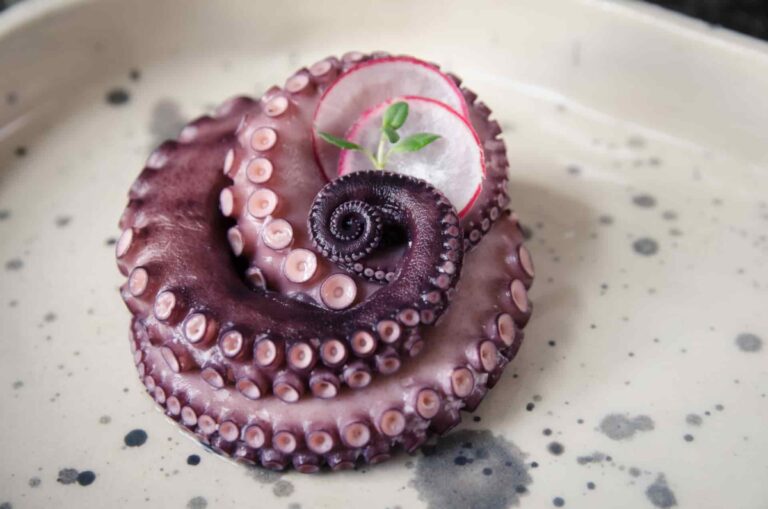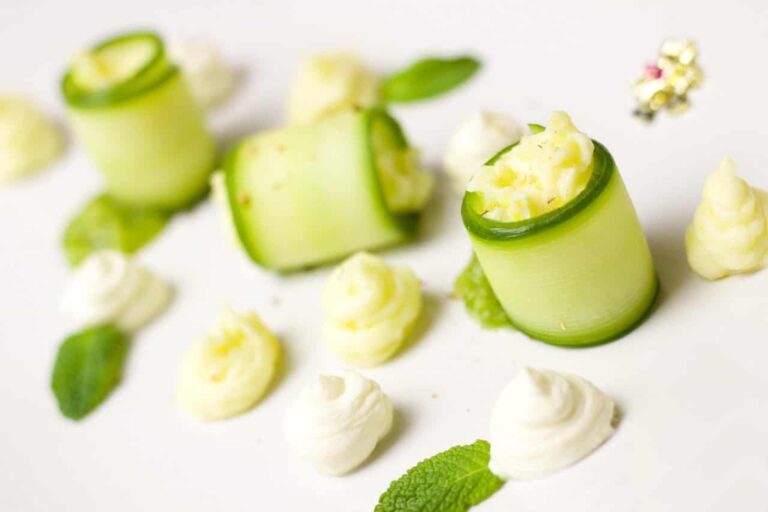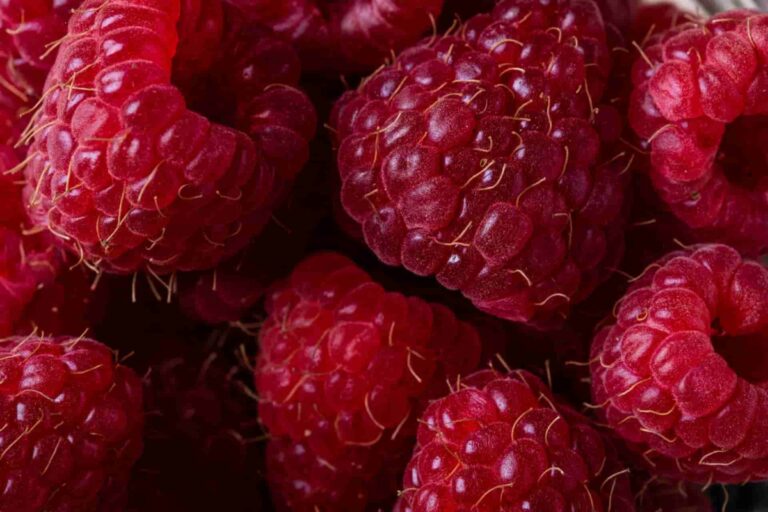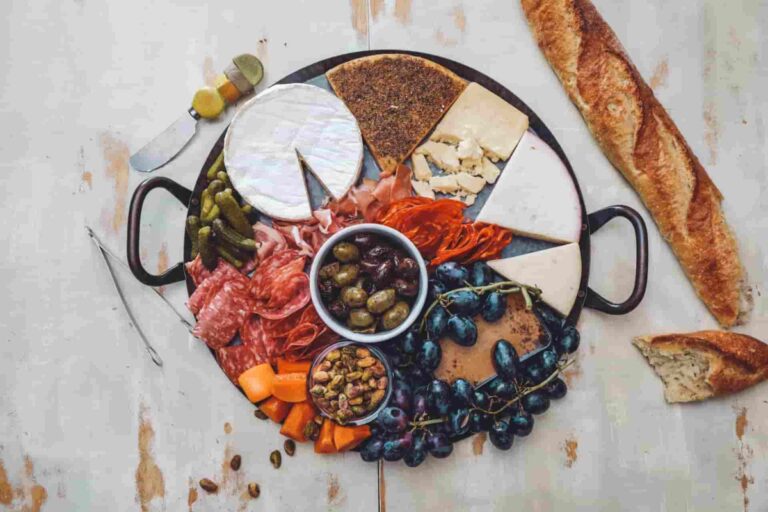Chicken 101-free secrets and insight
Did you know that there are 25 billion chickens on the globe, making them more numerous than people?
- Antarctica is the only continent that does not have any live hens on it. Vatican City is the only government in the entire world that does not permit the keeping of chickens. However, a flock of hens is maintained 26 miles outside of the city at Castel Gandolfo.
- Approximately 8,000 years ago, in the year 6000 B.C., the chicken was first domesticated in Southern China.
- The earlobes of the chicken determine the colour of the egg that they lay. Eggs laid by chickens with brown earlobes are darker in colour than eggs laid by chickens with white earlobes.
- As a result of hyperpigmentation, there is a rare breed of chicken that originated in Indonesia that is entirely black, including the feathers, the beak, and the organs. They have a potential market value of $2,500.00.
- A law prohibiting the use of any utensil other than one’s hands when eating fried chicken was enacted in Gainesville, Georgia in the year 1961. It turned out to be a publicity stunt designed to enhance the city’s reputation as the “poultry capital of the world.”
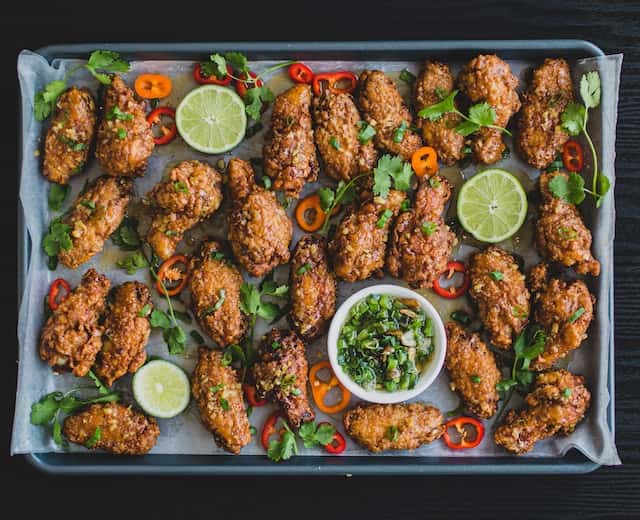
Chicken nutrition values and health benefits
- The health advantages of chicken have been extensively studied. However, the nutritional value of a dish made with chicken depends on how it was prepared as well as which parts of the chicken were used. The caloric content of darker cuts of meat, such as the thigh and drumstick, is higher than that of lighter cuts, such as the breast. Keeping the chicken skin on or frying the chicken will both result in an increase in the amount of saturated fat.
- Since the chicken breast is the leanest and most nutritious cut of the bird, it is the best choice if you are trying to reduce your intake of red meat in favour of chicken. The use of chicken as a substitute for red meat is highly recommended. Chicken is not only an excellent source of protein, but it has also been connected to a range of health advantages, including the following:
- The breast meat of a chicken is an excellent source of the minerals selenium, phosphorus, vitamin B6, and niacin. Selenium is necessary for thyroid function as well as the production of DNA. Niacin and vitamin B6 are both examples of the B vitamin family that are water-soluble and have an important part to play in the functioning of cells.
- In addition to assisting your body in keeping the muscle mass it already has, protein also assists in the process of building new muscle when combined with resistance training. A diet that helps you gain muscle mass should include chicken breasts because of the large amount of protein that they contain.
- According to research done, muscular mass and strength declines have a clear correlation with increased death rates in people as they get older. Therefore, preventing muscle loss is crucial at any age, even if your goal isn’t to build up your muscle mass through weight training.
- For a long time, many researchers and medical professionals thought that consuming a diet that was heavy in animal protein could lower bone density and increase the likelihood of breaking bones. On the other hand, more recent studies have shown that protein, in conjunction with calcium, can help protect bones. In order to maintain strong and healthy bones, it is essential to ingest an adequate amount of protein.
- Consuming protein causes you to experience satiety, which in turn can help curb your appetite and prevent you from overeating. Those who consumed more protein, for instance, demonstrated “better appetite control and satiety” in the context of a study of overweight individuals who were on diets that were lower in calories. Because of the high protein content, chicken breast is an excellent option for you to consider if you want to increase the level of enjoyment you get from the food you eat.
- Tryptophan is an important amino acid that plays a role in the regulation of the protein synthesis process. Chicken breasts contain tryptophan. In addition, tryptophan helps your brain produce serotonin, which is an important function of this amino acid. People who do not have enough serotonin in their bodies may suffer from symptoms of depression or have trouble remembering things. Additionally, tryptophan is involved in the production of melatonin, which is an essential hormone for sleep.
- There are very few people who are allergic to chicken, but it is not impossible. According to medical professionals, an allergy to chicken is approximately as common as an allergy to red meat (but being allergic to one kind of meat does not mean you will be allergic to other meats). There are cases in which people who are allergic to eggs also have an allergy to poultry. In cases of this form of allergy, symptoms typically manifest themselves when the individual comes into contact with raw meat, as opposed to eating cooked meat.
- Those who suffer from kidney illness should be wary of taking an excessive amount of protein, particularly in large quantities. If you have renal illness, you should consult a healthcare expert about the types and amounts of protein that are most beneficial for your condition.
100g of cooked chicken has 239 calories(999kj), 27g protein, 14g fat, and 0g carbs including 0g fibre.
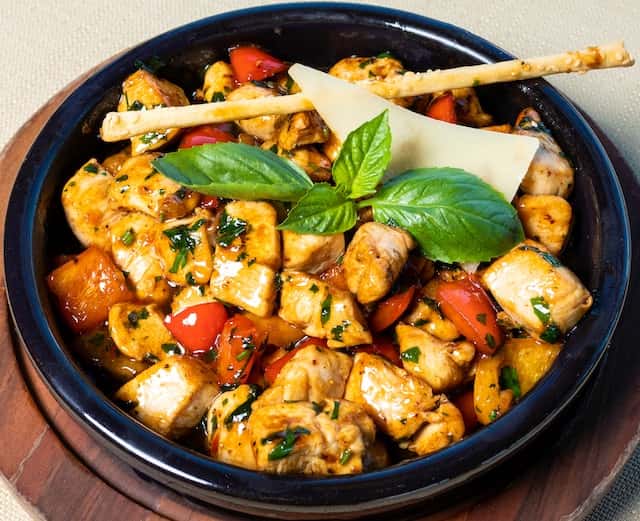
How to store chicken and how to buy them
- Before you buy a whole chicken, you should examine its round breast to ensure that it is tender to the touch. If you are shopping for a whole chicken, this is an important consideration. Because of the process of tenderization, the chicken’s meat will be more tender if the bird was young when it was slaughtered. The press test is particularly useful when purchasing chicken pieces; the flesh should not feel too solid, but it also should not remain sunken where you (gently) pressed it. It ought to be able to spring back into shape.
- There is no correlation between the colour of an animal’s skin and its degree of freshness or nutritional content. When attempting to establish the colour of its skin, you should search for pink with just trace amounts of white striping and stay away from any shades of grey at all costs. Be careful to check the sell by or best by date that is printed on the box as well, particularly if you aren’t intending on preparing the item right away.
- It is essential to prevent raw chicken fluids from leaking and contaminating other goods when chicken is being stored in the refrigerator, even though raw chicken may be maintained in the refrigerator for several days beyond its sell-by date. Before beginning the process of cooking the chicken, you need to make sure that it is stored in its original packaging (which needs to be vacuum-sealed or tightly wrapped) until it is ready to be prepared for cooking.
- While it is still uncooked, place it on the lowest shelf of your refrigerator just in case there is a spill during the cooking process. If you so desire, paper towels might be positioned underneath it to help absorb any drips that might occur.
- Even though it could make the chicken less tender and juicy, freezing it is the best way to preserve the family-sized box of chicken that you bought the previous week. You should throw away the chicken’s original packaging and then rewrap the chicken in either aluminium foil, plastic wrap, or freezer paper to ensure that it is as securely packaged as possible.
- If you want to store the chicken for a longer period of time than two months, you should wrap it as securely as possible twice. The maximum amount of time that chicken ground may be kept in the freezer is three months, but chicken parts can be frozen for up to nine months.
- You should never let chicken thaw at room temperature since it is very susceptible to the growth of potentially harmful bacteria in that environment. Before cooking, chicken that has been frozen should be defrosted either in the microwave, the refrigerator, or in a dish of cold water (the water in the dish should be changed every half an hour).
- Any of us, even chicken, is susceptible to food illness if we are not vigilant about our food handling practises. It’s awful to go to the trouble of preparing a whole chicken just to find out that the raw chicken went rotten before we cooked it. The most prominent warning signs of spoiled chicken include the appearance of grey spots, the presence of a nasty odour, the presence of slimy flesh, and the inability to recall when the chicken was purchased.
- The colour of the flesh is one of the most reliable indicators of whether or not a piece of raw chicken has gone bad. Chicken that is ready to eat raw should have a pale pink tint overall, with the white coloration of the fat indicating its safety. Meat that has become grey in colour and has yellow patches in the fat is not healthy. That hue indicates the chicken is spoiled, so we need to get rid of it soon.
- Our senses should be used to their full potential while attempting to determine whether or not perishable food should be consumed. Raw chicken that has gone rotten may also be identified by its odour. Meat is likely to be spoiled if we detect any strange odours while cooking it. In particular, focus on diluted odours that are somewhat pleasant but more akin to rotting eggs. In such a scenario, we should probably get rid of our chicken as quickly as possible.
- Another indicator of whether a chicken has gone rotten is how it feels on our fingertips. If there is no change in appearance or odour, we must test the meat by touching it. The flesh of a raw chicken should always feel wet; if it feels slimy, it’s no longer safe to consume. If the chicken still feels sticky after being washed, it’s probably spoiled.
- Finally, we need to recall the precise moment we purchased the chicken. This is a straightforward method for identifying spoiled raw chicken. Keep in mind that after being purchased, chicken should not be kept in the refrigerator for more than 4 days. As an added bonus, chicken has a four-month shelf life in the freezer. The chicken should be thrown out if we’ve kept it for more than this long. By doing this, we may prevent gastrointestinal distress or even food poisoning.
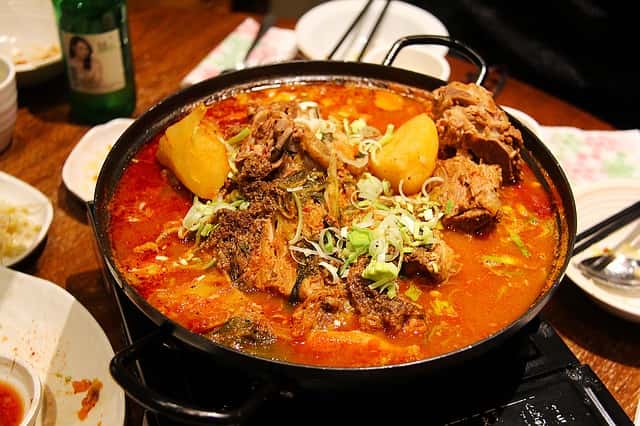
Cooking techniques, secrets, and tips from the kitchen
- In order to reduce the risk of cross-contamination, you should chop your chicken without ever rinsing it, since it is possible that rinsing raw meat might be harmful to your health. Separate cutting boards should be used for meat and everything else (fruits and vegetables, cheese, bread, etc.). After you have finished prepping the chicken for cooking, you should thoroughly wash your hands and clean any surfaces that it has been in contact with.
- For the purpose of ensuring that the chicken is safe to eat, I recommend cooking it to an internal temperature of 168 degrees Fahrenheit or 76 degrees Celsius. To ensure that this is done properly, you should invest in a meat thermometer. If, on the other hand, you cut into the chicken and see that the fluids that pour out are clear and there is no trace of pink, the chicken is probably safe to ingest.
- No matter how you choose to cook the meat, if you choose chicken of poor quality, it will have a severe influence not only on the flavour, but also on the well-being of the animals. Investigate the origin of the meat as well as the procedures used in its rearing; choosing free range is the best choice. Check the ingredients of any pre-packaged or frozen chicken breasts you buy to ensure that they have not been inflated with water so that they seem to be a better deal than they really are. Doing so will allow you to determine whether or not the chicken has been pumped full of water.
- During the cooking process, the bones and skin of the meat help to maintain the moisture level of the meat. Because it has so little oil, chicken breast, for instance, needs all the help it can get to keep its moisture while it is cooking. Therefore, it cooks much better when it is covered with the skin. If you find that the flavour of the skin is too strong for your liking, you may wish to remove it after the meat has been cooked (or want to reduce the calorie count). It will have an effect that cannot be ignored.
- Despite the fact that they are relatively fatty, chicken thighs have a flavour that is deep and satisfying. It is much easier to prevent the dark meat from drying out throughout the cooking process, and it is much more forgiving if a dish is left in the oven for a lengthy amount of time. In addition, chicken thighs are less common than chicken breasts, which means that they are more likely to provide better value for the money.
- To enhance the flavour of the chicken, a significant number of different spices are often used. If you season the chicken before you cook it, the skin will become crispier and the bird will have more flavour all over. Seasoning the chicken after it has been cooked is not the best way to go about it. This is of the utmost importance if you want to roast a whole chicken, in which case you should also season the cavity in which the bird will cook.
- Tinola is a classic Filipino soup that is often served as an appetiser or a main course with white rice, but may also be consumed on its own. This dish is traditionally prepared with chicken or fish, chayote wedges, and leaves of the siling labuyo chilli pepper, all of which are cooked in a broth seasoned with ginger, onions, and fish sauce and served over rice. Tinola is quite similar to Binakol and Ginataang Manok, with the exception that the latter two use coconut water and coconut milk, whilst the first does not. Lauya, one of the Ilocano people’s cuisines, is strongly associated with Tinola. In contrast, pork or beef knuckles, not chicken, are used to make Lauya.
- When combined with robust flavours like those found in this method, it produces a deliciously satisfying flavour profile. There is no possible way to make a mistake when combining lemon with herbs such as thyme, rosemary, and sage. The meal is given a little bit of a kick by the use of sticky honey-mustard sauce. In addition, there is no end to the ways in which you may raise the heat, regardless of whether you like the smoky flavour of harissa or the strong flavour of jerk sauce. You can use any combination of these two flavours.
- Chicken that has been marinated helps it become softer and also absorbs more flavour from the marinade. Even just twenty minutes may make a difference, but two hours is more than enough time since acidic ingredients like lemon, buttermilk, yoghurt, and vinegar don’t start to change the texture of the meat until after two hours have elapsed.
- The perfect way to feed a large number of guests or to ensure that there are enough leftovers for the following week is to roast a whole chicken. Before putting the chicken in the oven, make it crispy by rubbing it with olive oil or butter that has been melted. Season it liberally with salt and pepper before setting it in the oven. The meal may be given a distinctive flavour by combining ground ginger, smoky paprika, and a squeeze of lemon; this combination complements ginger mayonnaise very well.
- Chicken is good with apricots, citrus fruits, cranberries, currants, grapes, mangoes, peaches, pears, pomegranates, prunes, and raisins. Mango, pineapple, and orange are common stir-fry sauces. Apple, lemon, or pomegranate are tasty chicken toppings. Instead of the customary plum sauce or raspberry dressing over the chicken, consider a healthy lemon chicken dish.
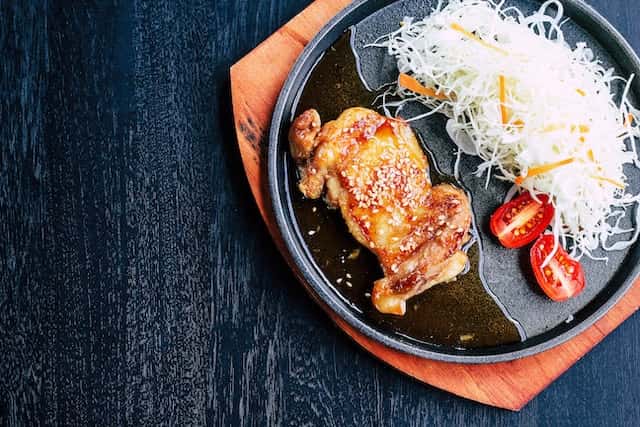
History of chicken from the beginning until today
- Many of today’s chickens are derived from hybrids of red and grey junglefowl that were first developed in the northern parts of the Indian subcontinent thousands of years ago. These hybrids of junglefowl were used to breed the first junglefowl.
- According to the most recent research, throughout the history of the chicken that dates back between 7,000 and 10,000 years, at least two wild progenitors and maybe more have been found.
- The most ancient fossil evidence of chickens was discovered in the frigid and arid plains of north-eastern China. However, the wild ancestors of chickens have never resided in these regions.
- There is evidence that chickens were used as a motif in Babylonian art as early as 600 BC. During the middle ages, chicken was a common choice for anyone looking to consume meat. Chickens of many different kinds, such as capons, pullets, and hens, have been a staple in the diets of the vast majority of people living in the Eastern Hemisphere for a very long time. One of its most frequent components was blancmange, a stew that was prepared by combining chicken, fried onions, milk, various spices, and sugar.
- In the 1800s in the United States of America, chicken was a rare feast reserved for the rich since it was more costly than other types of meat. During World War II, there was a shortage of beef and pigs, which led to an increase in the consumption of chicken in the United States.
- The growing awareness of bovine spongiform encephalopathy (BSE) among European consumers in 1996 led to a shift away from the consumption of beef and veal in favour of chicken (mad cow disease).

